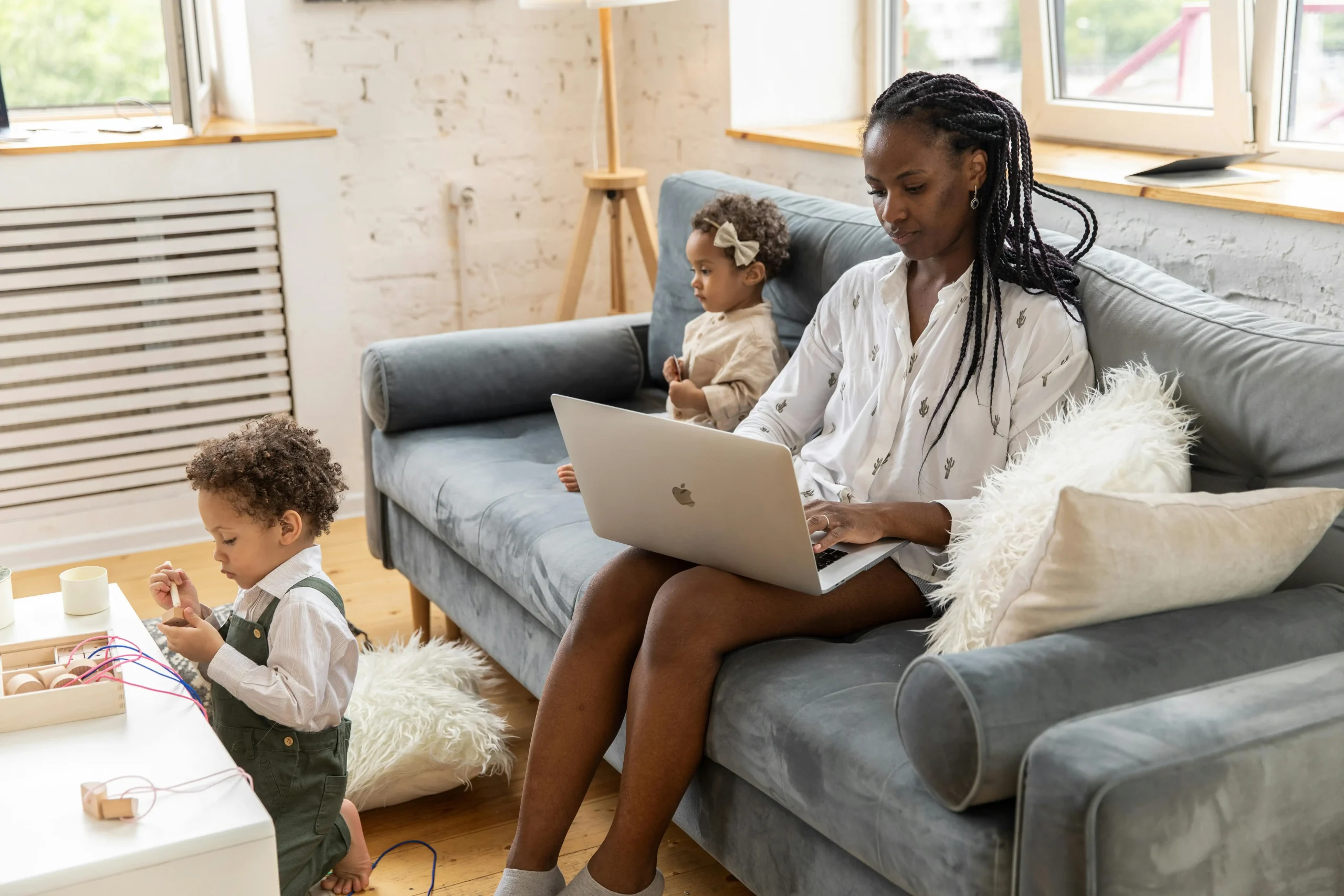Educational Activities to Keep Kids Busy While You Work
Working from home while simultaneously caring for young children can be challenging. But having educational activities to keep your young ones occupied while you work will make your experience much more manageable.
Children learn best when their creativity and imagination are engaged. Give your kids open-ended toys like puzzles, play dough, blocks and tinkertoys for optimal learning experiences.
1. Creative Activities
No matter if it is only for 15 minutes or an hour, kids can always find creative activities to engage themselves. Some planning and prep may be required depending on your child’s age.
Consider having them decorate rocks with messages to leave around their neighborhood to brighten someone’s day, or have them independently create pointillist art with paper and cotton swabs.
An engaging sensory bin is a fantastic way to keep pre-schoolers occupied for hours. Simply fill a box, bin or large Tupperware container with items like dried rice, beans and water – plus toys like small toy cars, dolls, ice cubes or plastic beads (that have passed their choking risk stage)!
Providing your dress up box with clothes, hats, mirrors and kid-safe accessories will encourage them to communicate using codes and ciphers with each other secretly. Furthermore, consider creating an DIY decoder wheel so they can enjoy secretly communicating using codes and ciphers!
2. Reading
Students love exploring new topics through reading books that offer interactive experiences of these subjects. Encourage your kids to read books that align with their personal interests like sports, trucks or art – this way they will feel excited about what they’re learning while connecting it to everyday experiences in real life.
Add high-energy, low-stress reading comprehension games into class to keep kids engaged. A popular example is Thumbs Up/Thumbs Down where students use their thumbs to vote on statements they hear during class – this allows you to see who understands the material better and can serve as a suitable replacement for Stand Up/Sit Down for those students exhibiting lower energy levels.
Book Tasting Parties can also be a fantastic reading activity! Simply arrange different genres of books on tables around the classroom and let students “speed date” each table for short amounts of time before visiting each one for themselves.
3. Outdoor Breaks
Kids need time and space to express their energy effectively and relax after being at school for extended periods. Going outside provides them with a new context to experience learning materials, increasing productivity when they return.
Outdoor recess gives children new opportunities to develop creative thinking skills, which ultimately translate to improved classroom performance by increasing attention and concentration levels. Furthermore, playing games together helps build their social skills as well.
Outdoor play can also help build visual motor coordination, essential for cutting and forming letters, numbers, and words. By adding nature-themed variations of familiar games like Simon Says to their repertoire, children can connect with their surroundings while exercising all senses – whether hearing the wind chirp or feeling its texture on their skin.
School breaks provide children with opportunities for memorable outdoor experiences like surfing camps and family camping trips that will create lifelong memories while cultivating their interest in and love of the great outdoors. Furthermore, they can take part in water activities, hiking trails or any natural surroundings to receive physical fitness training which helps build muscle strength and endurance.
4. Small Tasks
Parents should remember that hands-on activities provide children with more than enough stimulation. A sheet of paper and crayons can create a fun scavenger hunt where your child can tick off items on a list; younger kids might like plastic animal toys that fit inside cardboard boxes or O-shaped cereal with gimp string for necklace stringing! Or you could set up magnetic tiles so your kids can experiment building different structures in various ways; older children might like mixing colors, while younger ones can play with bubbles using bubble solution and blowers!
As a fun art project, provide children with small materials they can rub onto paper with the use of syringes or eye droppers (for safety, only use items you already have at home such as sponges trimmed for their hand size, coins or flat pieces of Lego) in order to create “rubbings”. This activity will keep them busy for hours while developing fine motor skills and creativity.
5. Texting
Kids can play independently with toys like blocks, trains and educational wooden toys while you work. Just be sure to choose toys which are age-appropriate and do not contain choking hazards. A separate play area could also help ensure children remain focused and engaged throughout their play session.
Text messaging is an invaluable way to stay in contact with family and friends, and is increasingly utilized by schools and other organizations as a method for communication with parents and students, including reminders, assignments, and updates.
Doing something fun like making birthday cards in one day (with the use of a timer) or building something with only tinker toys will keep kids motivated while providing a sense of purpose, helping them focus when working on other tasks. Goal setting provides motivation and helps the process along!
6. Pets
Pets can help children learn responsibility. They teach about emotions and communication while simultaneously building attachment. Many pets provide comforting support in hospitals or nursing homes.
Small animals such as hamsters, mice, rats, rabbits or guinea pigs make great first-time pet ownership options for children. Their care requirements are simple and can easily fit inside a cage; children can spend their free time watching over them while also cleaning its home and playing with it.
If you must work from home with your children, it’s essential that they find activities they can engage in themselves to keep busy and avoid boredom. Take inspiration from some of the activities listed above or create something truly innovative yourself. Just be sure to use materials safe for small children like straws or scissors that won’t become potential choking hazards!




